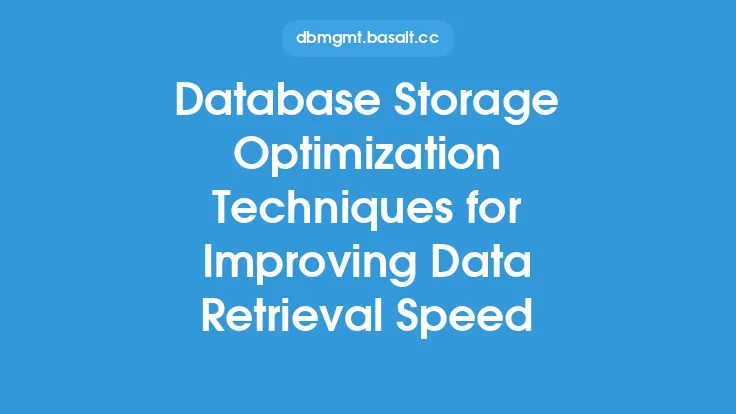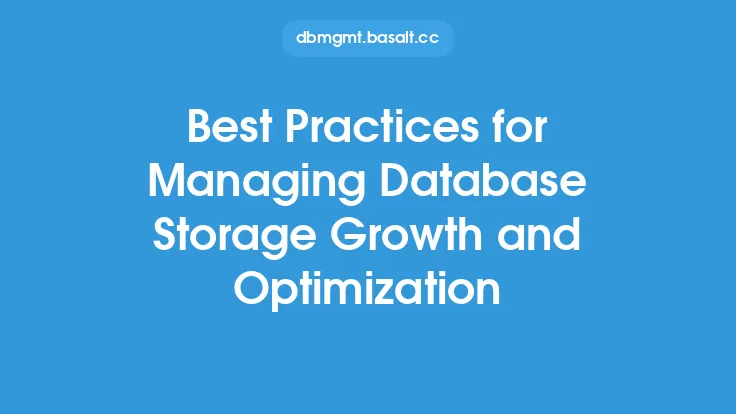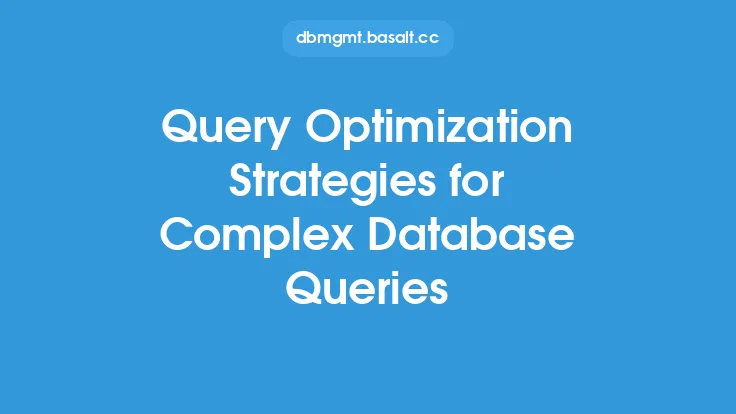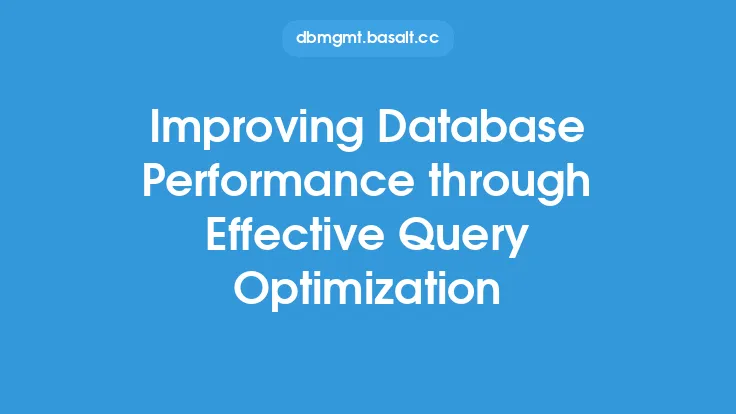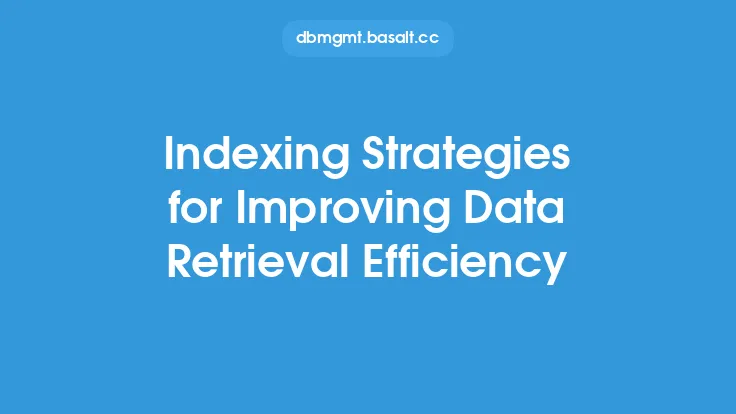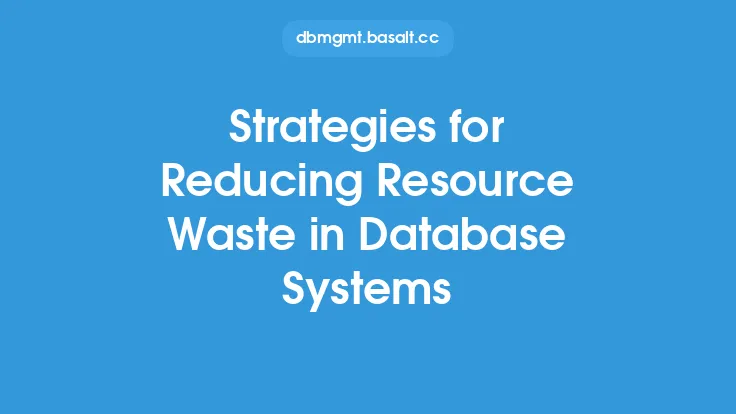When it comes to database performance optimization, storage optimization plays a crucial role in ensuring that data is stored and retrieved efficiently. A well-optimized storage system can significantly improve database performance, reduce costs, and enhance overall system reliability. In this article, we will delve into the various storage optimization strategies that can be employed to improve database efficiency.
Introduction to Storage Optimization
Storage optimization involves a set of techniques and strategies aimed at reducing storage costs, improving data retrieval speeds, and enhancing overall database performance. It encompasses a range of activities, including data compression, data deduplication, storage tiering, and caching. By implementing these strategies, organizations can optimize their storage systems to meet the growing demands of their databases, while also reducing costs and improving efficiency.
Understanding Storage Optimization Techniques
There are several storage optimization techniques that can be employed to improve database efficiency. These include:
- Data Striping: This involves dividing data into smaller chunks and storing them across multiple disks. This technique can improve data retrieval speeds and enhance overall system performance.
- Data Mirroring: This involves creating duplicate copies of data and storing them on separate disks. This technique can improve data availability and reduce the risk of data loss.
- Storage Tiering: This involves assigning different types of data to different storage tiers based on their performance and capacity requirements. This technique can help optimize storage costs and improve data retrieval speeds.
- Caching: This involves storing frequently accessed data in a fast, temporary storage location. This technique can improve data retrieval speeds and reduce the load on the underlying storage system.
Implementing Storage Optimization Strategies
Implementing storage optimization strategies requires a thorough understanding of the database and its storage requirements. The following steps can be taken to implement storage optimization strategies:
- Assess Storage Requirements: The first step is to assess the storage requirements of the database, including the type and amount of data, data growth rates, and performance requirements.
- Choose the Right Storage Technology: The next step is to choose the right storage technology, including disk arrays, solid-state drives, and flash storage.
- Configure Storage Systems: Once the storage technology has been chosen, the storage systems need to be configured to meet the database's performance and capacity requirements.
- Monitor and Optimize: Finally, the storage systems need to be continuously monitored and optimized to ensure that they are meeting the database's performance and capacity requirements.
Best Practices for Storage Optimization
There are several best practices that can be followed to optimize storage systems for database performance. These include:
- Regularly Monitor Storage Systems: Regular monitoring of storage systems can help identify performance bottlenecks and optimize storage configurations.
- Use Automated Storage Management Tools: Automated storage management tools can help simplify storage management and optimize storage configurations.
- Implement Data Lifecycle Management: Data lifecycle management involves managing data throughout its lifecycle, from creation to deletion. This can help optimize storage costs and improve data retrieval speeds.
- Use Storage Virtualization: Storage virtualization involves abstracting storage resources from the underlying physical storage. This can help simplify storage management and optimize storage configurations.
Storage Optimization Tools and Technologies
There are several storage optimization tools and technologies available that can help optimize storage systems for database performance. These include:
- Storage Area Networks (SANs): SANs are dedicated networks that connect storage devices to servers. They can help improve data retrieval speeds and enhance overall system performance.
- Network-Attached Storage (NAS): NAS is a file-level storage technology that allows multiple devices to access shared storage over a network. It can help simplify storage management and optimize storage configurations.
- Cloud Storage: Cloud storage involves storing data in a remote, cloud-based storage system. It can help optimize storage costs and improve data retrieval speeds.
- Flash Storage: Flash storage is a high-performance storage technology that uses flash memory to store data. It can help improve data retrieval speeds and enhance overall system performance.
Conclusion
In conclusion, storage optimization plays a critical role in ensuring that databases perform efficiently and effectively. By implementing storage optimization strategies, such as data striping, data mirroring, storage tiering, and caching, organizations can optimize their storage systems to meet the growing demands of their databases. Additionally, by following best practices, such as regularly monitoring storage systems, using automated storage management tools, and implementing data lifecycle management, organizations can ensure that their storage systems are optimized for database performance. By leveraging storage optimization tools and technologies, such as SANs, NAS, cloud storage, and flash storage, organizations can further optimize their storage systems and improve database efficiency.
